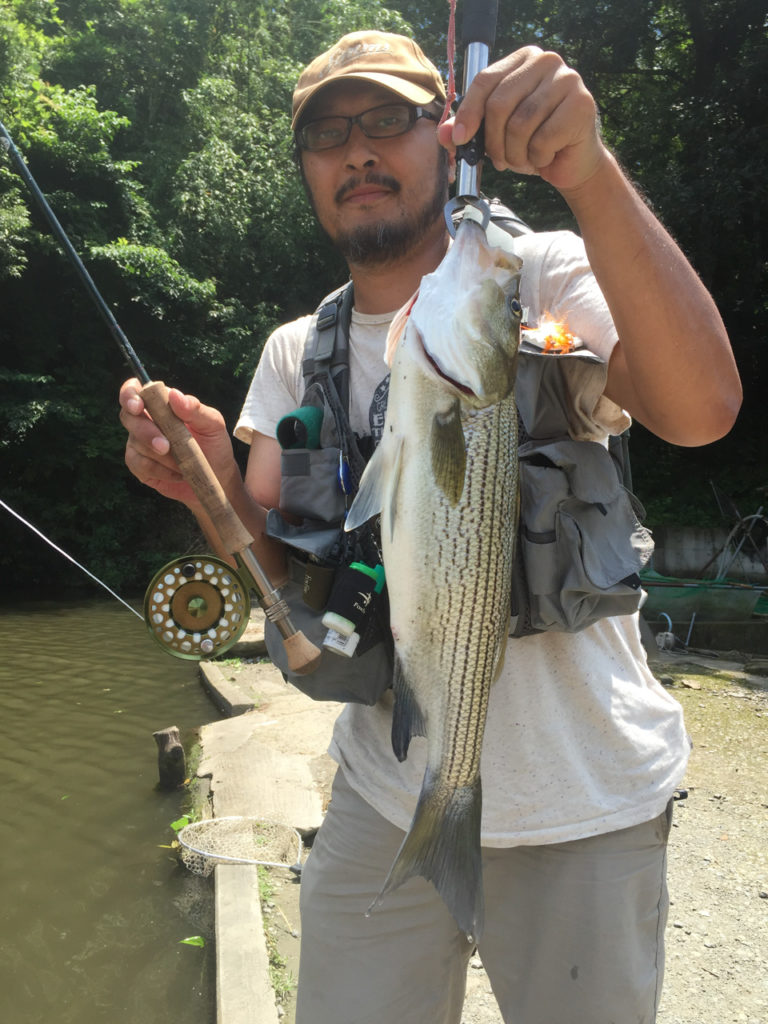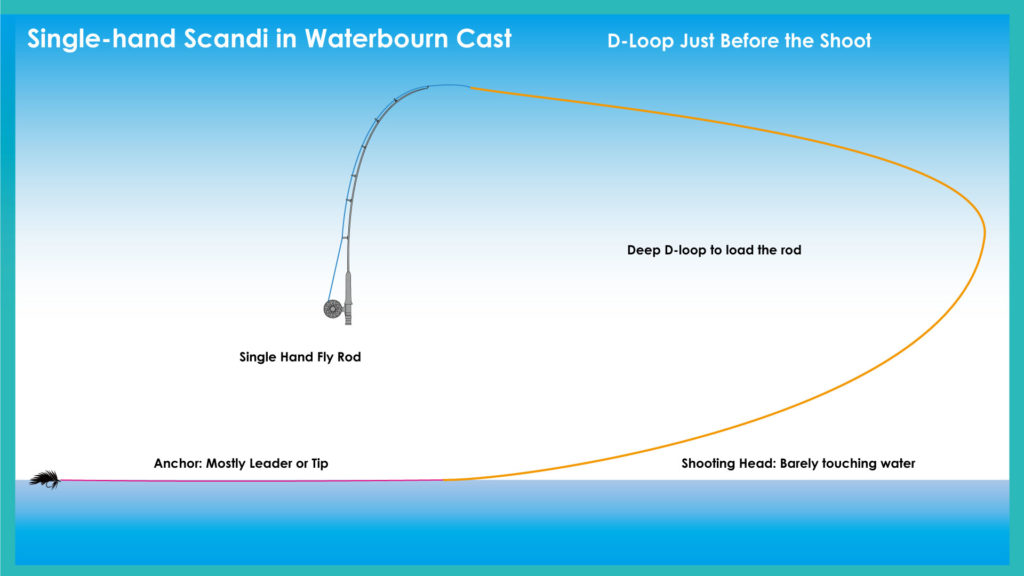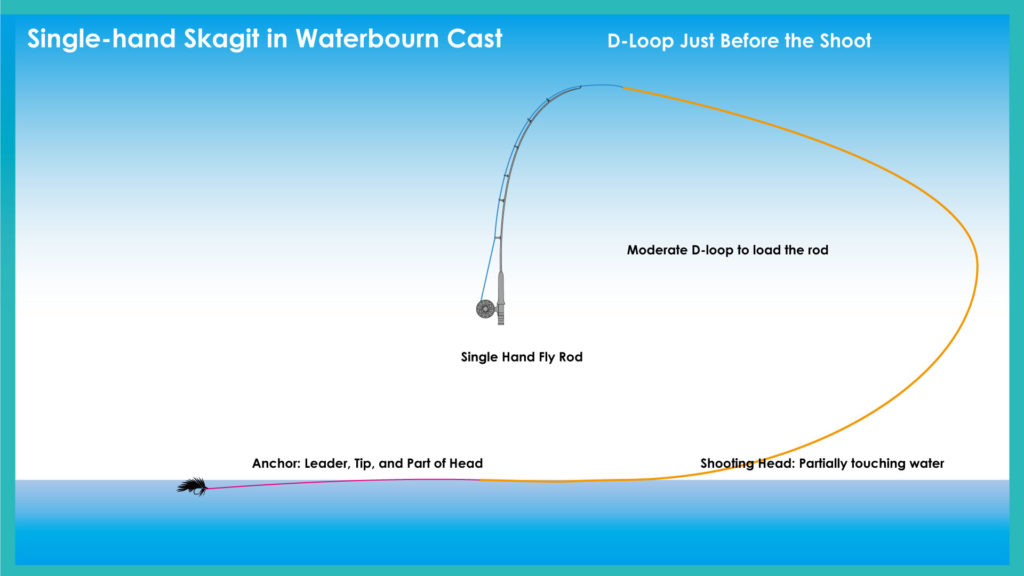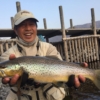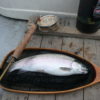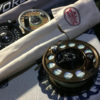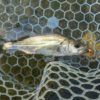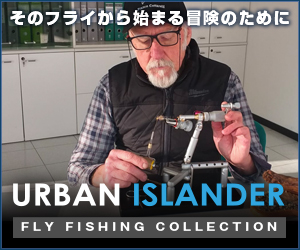Single Hand Skagit with OPST Commando Head – Part 2: 6wt x 225GR
OPST Commando Head 150 grain worked perfectly with 8'9'' 3wt last season when doing sight fishing and shotgun in alpine lake while casting size 18 - 10 mayfly/chirnomid imitation flies. Also I noticed that the height of power when Commando Head is turning over seems to concentrate at about 10-12 feet from the head which makes perfect sense when they recommend to use tips exactly that length. This "punch" wasn't too bad in 3wt line speed and more like helping when using large and wind resistant flies such as cicada and smelt on size 6 to some extent.
That's covered, but I still need higher power solution to cover sinktip and streamers, so now 225 grain on 9' 6wt.
- Very Wide Coverage by Single-hand 6wt
- Why Single-hand Skagit?
- Why Skagit Not Scandi?
- Why Compact?
- OPST Commando Head Matching Chart
- Into the Field
- Tackle Information
1. Very Wide Coverage by Single-hand 6wt
You don't need to concern about the impact fly line makes that distracts fish's attention when using big fly, where surface is disturbed by wind and current, or when presentation is made into depth with sinking line. However, it is still best to use the lightest line possible to minimize the casting pressure and fatigue.
Single-hand 6wt outfit has enough power to take care of those mentioned above while being able to stay relatively quiet. There are wide variety of fly line made available for 6wt from floating lines in variety of tapers to extra fast sinking line. If the 6wt is made ready for saltwater games, it has strong enough butt that helps not only fight fish but also makes it easy to lift sinking line and sink tip. Moreover, the combined weight of your rod loaded with fly line has enough mass to balance with firmly built fly reel that comes with superb braking features such as Tibor Light. Altogether, 6wt is a very capable range.
In my case, I have been using R. L. Winston Boron II-MX 906-4 after experiencing trusting performance in its 10wt brother for offshore, 8wt sister for reef/inshore. In practical situation this outfit can do dry/wet fly trout, accuracy-driven bass/mangrove fishing, 10lb carp, trevally in surf, boat fishing, and stock pond for strong fish such as striper and catfish. If we are to be allowed to take only one fly rod, I will strongly recommend buying saltwater-ready single hand 6wt rod.
Also, 6wt has enough mass to be able to feel the feedback while being not too heavy to handle, so it is also recommended to be the first rod for those who wants to learn fly fishing to learn relatively faster. (If the rookie is aiming to do small stream fishing or person of weaker build/kids, 4wt is the best starter)
2. Why Single-hand Skagit?
So, single-hand 6wt is very useful tool in many cases, however, you still need plenty of space in the back as long as overhead casting is needed. You can do roll cast when using relatively small flies, but roll cast doesn't help cast very far when using heavily weighted nymph/shrimp patterns or streamer on sinktip. Also, roll cast needs to stretch your line and cast your line in the same direction not able to change direction in corresponding to fishing situation.
What provides the best solution to them? Made for spey cast not using back space or short in length that saves back space when doing overhead? OPST Skagit. I already had very successful case study for 3wt, so I listed up what I need again:
- Shooting head system - that can do waterborn cast 80% overhead cast 20%.
- Short belly - short enough for 9 feet rod while not losing good grips for anchor and sweep to load the rod, also short helps save space when doing over head
- Tip interchangable - need to handle intermediate polyleader to turn over bassbug/dumbbell eye fly and heavy sinktip using T14
I contacted OPST again. This time answer was much easier since the range I'm talking about takes care of similar fishing situation in steelhead and salmon.
- Choose OPST Commando Head 225 grain for single-hand 6wt shorter thatn 9'6''
- Choose float/sink tip in 10-12 feet length, OPST provides plenty
- Airflo polyleader comes with many choices, so as RIO MOW
I went out to Shibuya Sansui again for OPST run.
3. Why Skagit Not Scandi?
Now, why select skagit set up when there are plenty of scandi made for single-hand? Well, I love singe-hand Scandi for the perfection of long distance and smoothness. If you want to go for distance as priority, Scandi is the way to go.
But Scandi head is relatively longer, so you have to produce deep enough D-loop to load the rod before the shoot. In order to do what's easily done on two-hand rod for Scandi on single-hand rod, you ought to increase line speed by double-haul, sustain anchor by extending leader, and enough space to form deep D-loop behind you. If you are wading, deeper you go more challenge you face to do everything within given space of 9 feet single-hand rod. You need to be an expert to do that.
On the other hand, Skagit folds shooting head itself to produce anchor, so you can sustain anchor without worrying too much about leader and due to its compact profile, you can produce shooting head with shorter length that wont't eat too much back space and easy for single-hand rod that has very tight space. However, if you need to, you can extend the length of float/sink tip or polyleader to make pseudo-Scandi. You have choice to go compact. That alone is a great benefit for someone like me who has medical problem on casting arm, because I need to deal with only the short time of weight loading onto my shoulder.
Also, Skagit let you wait for a moment before forming D-loop and shoot, so it gives your more space to re-think the cast or change direction. If you are going to a place where you need to adopt to changing environment, Skagit will come very handy.
However, if you are going to a place where you can control how deep you wade and need to present a fly quietly into a distant target, two-hand Scandi is absolutely the best tool.
4. Why Compact?
Again, the best part of Skagit is being compact and scalable. Why? It's because Skagit was developed in the country where anglers needed to adopt to rivers where wading often has to go deep where fast sinking streamer needed to be presented into heavy current. In this tight and uncomfortable situation, everything needed to be compact. And then leading guys such as Ed Ward and Jerry French further perfected the set up by going just how small things can be. Thanks to the great work of them it's now very adoptable even to single-hand.
5. OPST Commando Head Matching Chart
| Rod Weight | 番手 | Rod Length | 長さ | Commando Head | Sink Tips | Float Tips |
|---|---|---|---|---|
| 3wt | 9' or under | 150 grain | OPST 5' | OPST 5', OPST 7.5', OPST 10', Airflo 10' |
| 3wt | 10' or up | 175 grain | OPST 5' | OPST 5', OPST 7.5', OPST 10' |
| 4wt | 9' or under | 175 grain | OPST 5' | OPST 5', OPST 7.5', OPST 10' |
| 4wt | 10' or up | 200 grain | OPST 5', OPST 12' 96 grain | OPST 5', OPST 7.5', OPST 10' |
| 5wt | 9' or under | 200 grain | OPST 5', OPST 12' 96 grain | OPST 5', OPST 7.5', OPST 10' |
| 5wt | 10' or up | 225 grain | OPST 5', OPST 12' 96 grain | OPST 5', OPST 7.5', OPST 10' |
| 6wt | 9' or under | 225 grain | OPST 5', OPST 12' 96 grain | OPST 5', OPST 7.5', OPST 10' |
| 6wt | 10' or up | 250 grain | OPST 5', OPST 12' 96 grain | OPST 5', OPST 7.5', OPST 10' |
| 7wt | 9' or under | 250 grain | OPST 5', OPST 12' 96 grain | OPST 5', OPST 7.5', OPST 10' |
| 7wt | 10' or up | 275 grain | OPST 5', OPST 12' 96 grain | OPST 5', OPST 7.5', OPST 10' |
| 8wt | 9' or under | 275 grain | OPST 5', OPST 12' 96 grain | OPST 5', OPST 7.5', OPST 10' |
| 8wt | 10' or up | 300 grain | OPST 12' 96/132 grain | RIO 10' MOW or RIO Replacement Tip |
6. Into the Field: Casting
I first took this outfit out last year to go after summer end trevally and seabass in Western Izu. In sea port, I tried to cast with zero wading by anchoring leader + shooting head about one rod length in front of me, then performed perry poke cast and attained 50-60ft easily. Towards the direction (into my left) where I have more space to form D-loop (on my right), 70ft was very easy. Again, no wading done from about 1m above the water surface (I don't think I can do the same using any rod shorter than 9'). 150 grain surprised me just how powerful that is, now 225 grain redefined that surprise with more power.
Then I went down to quiet beach and waded just enough to see how far I can cast with fully giving my work. Firm anchor by perry poke, double-haul, D-loop, shoot... 90ft. It was rather challenging using floating tip, but if I used slow sink/fast sink tip or polyleader, this will become much easier as they will give stronger sustained anchor to bend the rod for me.
Overhead. Turn over by short head is much stronger than 150 grain, so I had to adjust the timing... which I couldn't do much only having one floating tip, instead I simply pickup and shoot. 70-80ft are automatic, I mean automatic considering I am doing this with a shoulder with medical problem. So, this is very helpful when I am doing beach-side shotgun. Later I tried to slow down the turn over by using 12ft sink tip to bend the rod further more. It worked perfectly and double-haul to attain 90ft is pretty easy.
7. Into the Field: Presentation
Recently, I made a trip to a trout lake to examine how to make effective presentation using this set up.
My right arm wasn't in great condition in the morning, so I started using my left arm doing circle cast with zebra midge in about 50ft distance. I have done the same on 150 grain on 3wt before, but this 225 grain on 6wt has done it just as quietly. If you want to make the most quiet presentation doing match the hatch, circle cast is the way to go and try doing that with your other arm.
Then I wanted to test the swing presentation. I switched the 10ft polyleader to slow sinking for wet fly. Now the set up gave me firm anchor allowing me to do perry poke that gave 70ft cast very comfortably with set up fully turned over with only adding single haul. With double haul to give good shoot out gave 90ft, but I'd say 70ft is the controllable range for this set up to assure complete turn over down to fly. The fact this skagit head is made short and Ken Cube's floating shooting line has very high response, it was very easy to turn the fly at desired timing. Again 70ft range was easy to mend the shooting line to adjust the swing, but 90ft was too far to control. Very effective swing fishing tool.
After a while, my muscle got accustomed to the balance of this 6wt set up, so I further switched the 10ft polyleader to fast sinking for streamer. It had enough power to do perry poke at ease, but now it became demanding on my bad shoulder, so I tried overhead cast. I still needed to withstand the momental force of pick up, but then the fast line speed helped not needing to hold it too long on backcast then shoot for easy 70ft. I tried double-hauling then shoot which gave 90ft with good turn over, but timing is very tight to control the turn over, so I would say it's essential to practice for 90ft, but only to create a buffer to help control cast.
Again, I have done all this with my right shoulder that's having medical problem. Yes, I cover my shortcoming as much as possible with my experience and skill, but if you have healthy shoulder? What are you waiting for? Try out for yourself.

8. Tackle Information
Single-hand Skagit on 6wt:
- Shooting Head: OPST Commando Head 225 grain (12 feet)
- Shooting Line: Ken Cube EX Shooting Line - floating 0.22 (I cut in half for 3wt and this 6wt)
- Tip/Leader: Airflo Polyleader 10ft floating, slow sinking, and fast sinking
- Tipet: Seaguar fuluoro carbon 8-16lb test x 4-6 feet
- Fly Rod: R.L. Winston Boron II-MX 906-4: 9'0'' 6wt
- Fly Reel: Tibor Light Backcountry CL
[amazonjs asin="B06X9RQC47" locale="US" title="OPST Pure Skagit Commando Head"]
[amazonjs asin="B06XB1F77C" locale="US" title="OPST Pure Skagit Commando Tip"]
この記事のディスカッションに参加する | Join the Discussion
東京フライフィッシング&カントリークラブのFacebook グループ「Friends Lobby」ではメンバー以外の方とのディスカッションも行っています。気になる情報や質問などはこちらまで!

